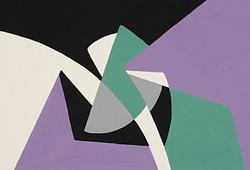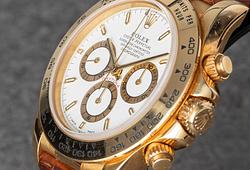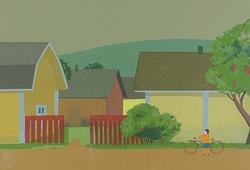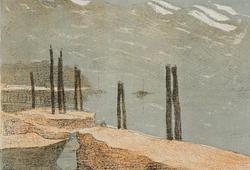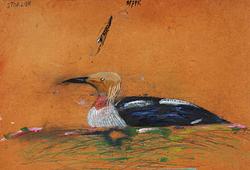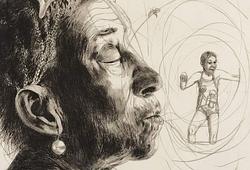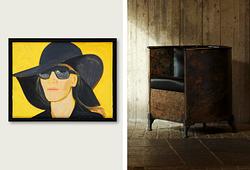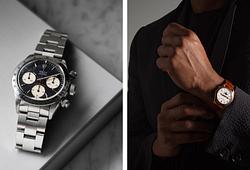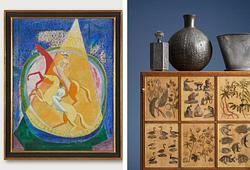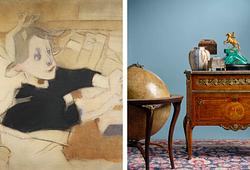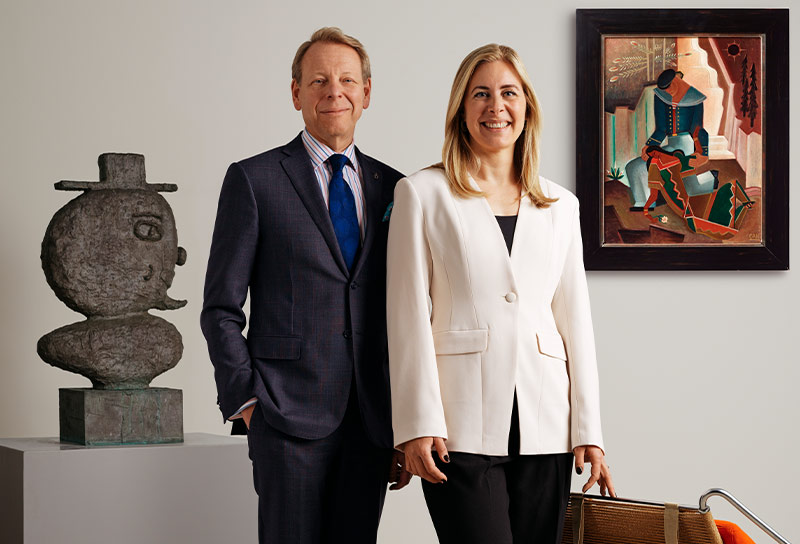Henry Moore
"Seated figure"
Signed Moore. Executed in 1949. Bronze edition 7 + 1. Green patinated bronze, height 23 cm. Henry Moore Foundation, cat. no. LH 272 cast d.
Import VAT
Import VAT (12%) will be charged on the hammer price on this lot. For further details please contact customer service +46 8-614 08 00.
Provenance
Arild Wahlström Collection, Norway. Thence by descent within the family.
Literature
Henry Moore Complete Sculpture Volume 2 1949-1954, edited by Alan Bowness, 1986, no. 272, p. 26.
More information
Henry Moore (1898–1986) was one of the most influential sculptors of the 20th century, known for his abstract, organic forms that often drew inspiration from nature and the human body. He was influenced by African and Pre-Columbian art, as well as by contemporary artists such as Pablo Picasso and Alberto Giacometti. At the same time, Moore developed his own visual language by working with materials such as marble and bronze, giving his works a sense of weight and physical presence. Despite the often simple and stylized forms, Moore’s sculptures carried a strong emotional charge, with a particular focus on capturing the human body language and the subtle details that express inner feelings, without relying on realistic depiction.
Moore's visual language is characterized by biomorphic shapes that hover between figuration and abstraction. He was the son of a coal miner in Yorkshire and had his first retrospective exhibition abroad at the Museum of Modern Art in New York in 1946, where he quickly became an international sensation. In 1948, he represented the United Kingdom at the Venice Biennale and won the international sculpture prize. Today, his sculptures are found in public parks and squares around the world, as well as in collections at Tate, the Guggenheim Museum, the Hammer Museum, the Stedelijk Museum, and the Art Gallery of Ontario, among others.
Artist
Henry Moore (1898-1986) was a prominent British sculptor and artist who played a crucial role in the development of modern sculpture. His contributions to the art world are exceptional, and his works have had a lasting impact on art history.
Henry Moore was born in Castleford, Yorkshire, and showed an early passion for art. After serving in World War I, he studied at the Leeds School of Art and later at the Royal College of Art in London. It was here that he began exploring forms and materials that would define his artistic career.
Moore was strongly influenced by artists such as Pablo Picasso and Constantin Brancusi. He was also interested in non-Western art and sculpture traditions, particularly African and Oceanic art. These influences shaped Moore's unique style and his interest in exploring abstract forms and the representation of the human body.
One of the most prominent features of Moore's work is his fascination with the human figure. He experimented with abstracting and distorting the body to create sculptures that express a sense of movement, balance, and harmony. His sculptures often display rounded and organic forms, drawn from nature and the landscape around him.
Moore used a range of materials for his works, including stone, bronze, and wood. He was skilled at harnessing the properties of these materials, giving them a sense of life and movement. His sculptures often have a monumental scale and a presence that impacts the surrounding environment.
Throughout his career, Henry Moore also created many public artworks and monuments around the world. His works can be found in parks, museums, and urban environments worldwide, becoming icons of modern art. One example is his famous sculpture "Reclining Figure" (1951) located in The Art Institute of Chicago. This work has become a symbol of Moore's style and his contribution to the world of sculpture.
Henry Moore's influence extends far beyond his own work. He taught at several art institutions, inspiring an entire generation of young artists. His vision that sculpture can be both abstract and emotionally powerful continues to influence the art world.
Read more



